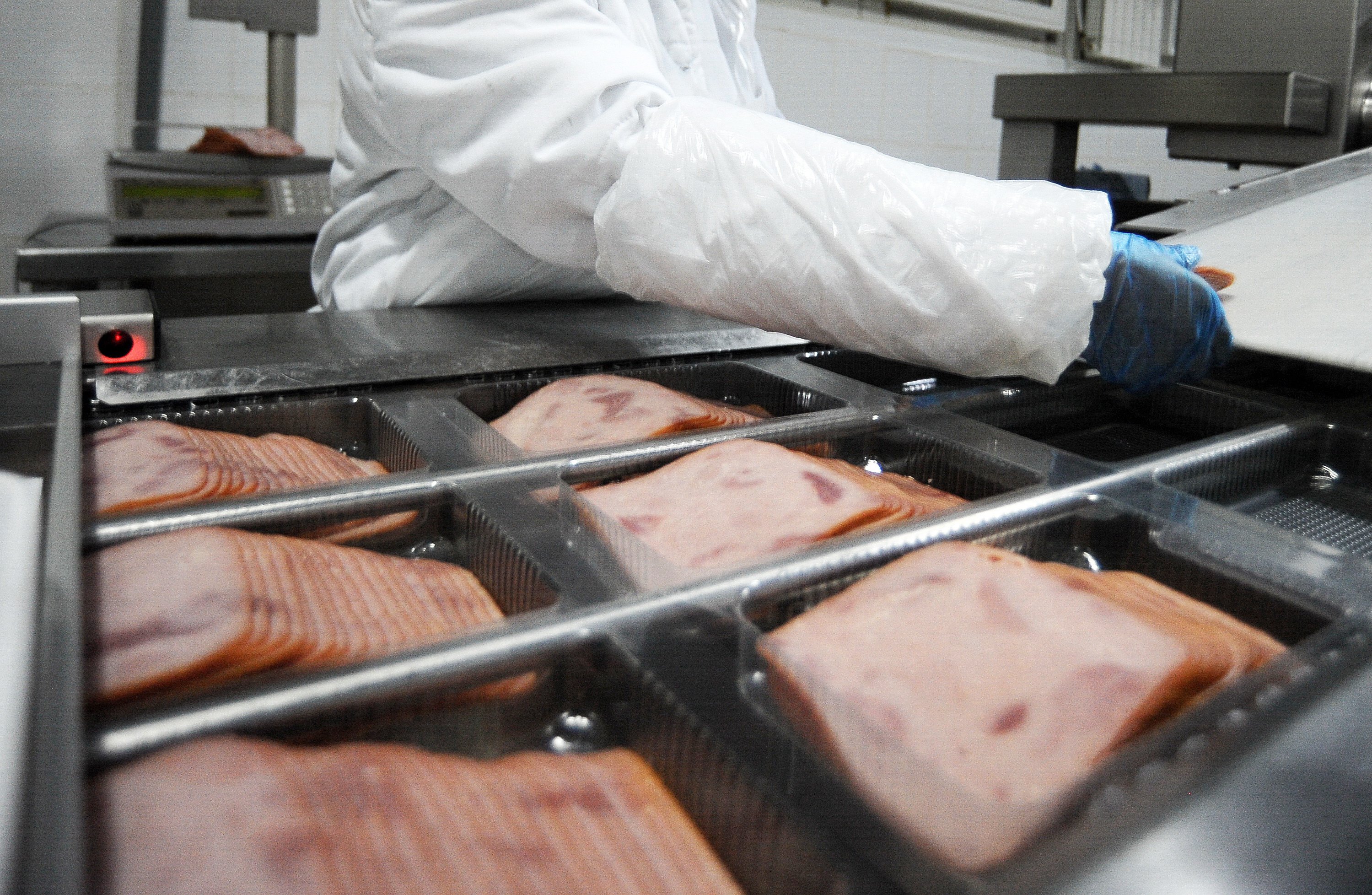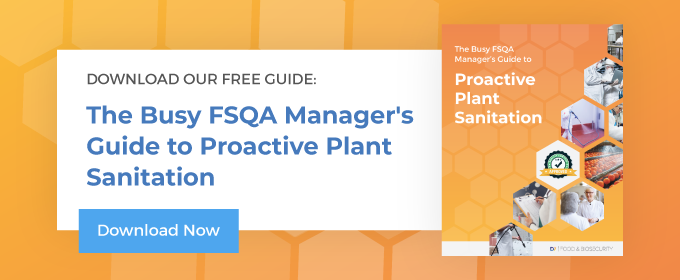
Biofilms in the food processing industry can create persistent challenges, especially when their origin is difficult to identify. Even when the source of the biofilm is known, standard sanitation practices are often not sufficient for removing it. In these cases, deep cleaning and disinfection is required for effectively treating biofilms.
Although some biofilms can exist for long periods of time without creating an outbreak, one common challenge is the sloughing of bacteria that can then adhere to other surfaces or to the food being processed. Some biofilms are made of spoilage bacteria that can reduce shelf life, and others can cause foodborne illness and prompt expensive recalls. Examples of biofilms that adversely affect humans include Bacillus cereus, E. coli (including STEC strains), Listeria monocytogenes, Salmonella enterica, and Staphylococcus aureus.
Biofilms can also cause damage to equipment through corrosion or reduced efficacy of measurement and detection devices. In some cases, the bacteria in biofilms can become more resistant to cleaning and sanitizing, making it even more important to prevent them from forming in the first place.
Biofilm removal often requires deep cleaning. Use these industry tips for preventing and removing biofilms in a food processing environment.
1. Disassemble equipment
Bacteria can gather on equipment in places that sanitizers might not be able to reach through surface application. To ensure that all surfaces, both exterior and interior, are treated, disassemble processing equipment, clean it to remove debris and residues, rinse it thoroughly, and apply an appropriate sanitizer.
2. Don’t ignore areas that are difficult to reach
It might not be convenient to scrub the corners where the walls meet the ceiling or to move equipment so you can access areas behind and between it, but these are exactly the areas where bacteria and biofilms will flourish if left untreated. Take the time during deep cleaning to treat all of those difficult-to-reach areas that might not be attended to during daily sanitation protocols.
3. Create sanitation protocols for drains
It’s easy to forget about what happens to water and other liquids after they go down the drain, but when it comes to sanitation in a food processing facility, this critical area cannot be neglected both during a deep clean and on a daily basis. A moist environment that sometimes has standing water is the perfect place for bacteria to thrive. When drains get backed up or when liquid sloshes in and out of a drain, the bacteria that are living there have an opportunity to find a new home, which could be a floor that has been recently sanitized. Avoid this potential for cross-contamination by including drains in your daily and deep cleaning practices.
4. Mechanical scrubbing may be necessary
Some sanitizers require mechanical scrubbing to effectively remove biofilms. When this is the case, make sure you have all of the necessary equipment to scrub in every area. This might require special brushes for scrubbing equipment parts or extenders for ceilings and high places. Remember that you might also have to move heavy equipment to access the spaces between machinery.
5. Use foaming products to save manpower
In order to reduce the manpower required for mechanical scrubbing, use a foaming sanitizer such as D7, which is effective against biofilms without mechanical action. A foaming sanitizer allows you to apply biofilm treatment on a broad range of surface types, including vertical and rounded areas. Eliminating the need for scrubbing allows you to sanitize more efficiently and more effectively because you can rely on the chemicals to do the work. Because it requires less manpower, a foaming application also enables daily sanitizing.
6. Use chemicals correctly
Various sanitizing chemicals must be applied in different concentrations and for different contact times. It’s critical that manufacturers’ recommendations be followed to ensure maximum efficacy and to avoid having to unnecessarily treat areas a second time. Some sanitizing protocols require using a combination of chemicals to reduce the risk of bacterial resistance. This can create confusion among sanitation crews if they are not using the same sanitizers every time. Provide regular training and clear documentation to help ensure that crews are using the chemicals correctly every time.
Using the right chemicals at the right concentrations and for the right amount of time is critical for deep cleaning success when trying to remove biofilms. One way to simplify the equation is by using a single chemical that removes biofilms with no mechanical scrubbing required. D7’s powerful foam allows you to do this, even in the most challenging environments or hard to reach areas.

